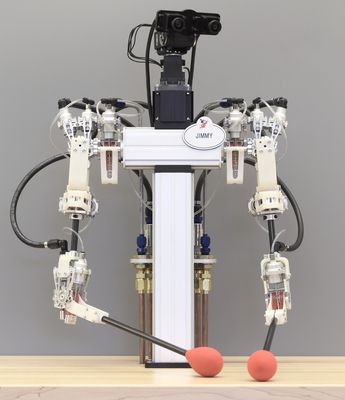It was unveiled at the DARPA technology expo.
A new measurement of the dust around KIC 8462852 reveals that it seems to be consistent with the breakup of a cluster of Halley-like comets.
The Kepler satellite was designed to search for Earth-sized planets in the habitable zone of stars by measuring dips in a star’s brightness as orbiting planets move across the stellar disc (transits). Its sensitive camera stares at more than 150,000 stars towards the constellations of Cygnus and Lyrae, and so far has found over 5000 exoplanet candidates. But Kepler also monitors the light fluctuations in all the other stars, even dips not caused by transits, and has found some bizarre situations. Perhaps the strangest is the case of KIC 846852, an otherwise normal star slightly larger than the Sun that has exhibited significant, irregular dips in the flux that last as short as a few days or as long as eighty days, and are as deep as 20%. The source is so far unique in the Kepler database.

A human-safe lifelike telepresence robot with the delicacy and precision needed to pick up an egg without breaking it or thread a sewing needle has been developed by researchers at Disney Research, the Catholic University of America, and Carnegie Mellon University.
The secret: a hydrostatic transmission that precisely drives robot arms, offering extreme precision with almost no friction or play.
The hybrid transmission design also makes it possible to halve the number of bulky hydraulic lines that a fully hydraulic system would require and allows for making its robotic limbs lighter and smaller, said John P. Whitney, an assistant professor of mechanical and industrial engineering at Northeastern University, who led the development of the transmission while an associate research scientist at Disney Research.
“Chinese researchers have developed a car that is controlled by your thoughts. Could it be the future of driving?”
BLOOMINGTON, Ill.— An international team of physicists including Illinois Wesleyan University Professor of Physics Gabe Spalding has shown waves of light can seem to travel back in time.
It may seem like science fiction, but the experiment did not violate the laws of physics. Spalding, his physics student Joseph Richards ’16 and a team of scientists tackled a century-old intuition from Lord Rayleigh regarding the speed of sound. Rayleigh theorized that music being played on an object traveling faster than the speed of sound, a supersonic jet for example, would result in a listener hearing the music playing in reverse. The Spalding team simulated what an observer standing still would see when looking at a superluminal (faster than the speed of light) occurrence. The results of the scientists’ experiment, conducted last summer at Heriot-Watt University in Edinburgh, Scotland, have been published in Science Advances.
“The existence of an absolute limit, the speed of light, is the natural source of the question: what would happen if we cross this limit?” lead author Mattero Clerici told a writer for a post on IFLScience. “Light sources, however, may move faster than the speed of light when their speed is not associated with the physical motion of matter. Following this line of thought, we devised a way to experimentally investigate the [effects] of superluminal motion.”
The use of cryogenics, for now, borders on science fiction—but that hasn’t stopped scientists and wealthy enthusiasts from trying to make it a reality.
Humai, an L.A.-based robotics company, hopes to freeze human brains after death with the expectation that technology will soon catch up—allowing the brain to be resurrected in an artificial body. Neuroscientists have excessively cautioned about lending cryogenics credence, but scientific research has blurred the definition of death and the consensus on when it occurs.
For centuries, death was called at the moment the heart stopped beating. However, medicine has evolved to the point that cardiopulmonary resuscitation (CPR) is now a common life-saving technique incorporated in basic first aid training, along with more advanced forms of resuscitation—like defibrillators—that can restart the heart. Several cases have been cited where a person under cardiac arrest has been brought back to life hours after they’ve technically died, when cooling processes and correct resuscitation procedures are implemented. According to a 2012 study published in Nature, skeletal muscle stem cells can retain their ability to regenerate for up to 17 days after death, redefining death as occurring in steps rather than at one single moment.
Thinking about a change of career? Google’s got a heck of a job offer for you. They’ll potentially pay up to $40,000 a year for you to not drive one of their autonomous cars. That’s based on base pay for $20 per hour working full time hours (40 hours a week).
There has to be some kind of catch, you say? Of course there is. Google isn’t just planning on throwing money at people to ride around with an AI chauffeur while sucking on slurpees and binge-watching Netflix from the non-driver’s seat.
No, you’ll actually have to pay attention. Google’s cars have logged plenty of hours on real roads, but there are still going to be times when the car doesn’t know how to handle a situation — say, sharing a narrow section of road with an oncoming bus. Since there’s no way of knowing when you’ll need to lend a helping hand (or foot), you need to be ever vigilant behind the wheel.